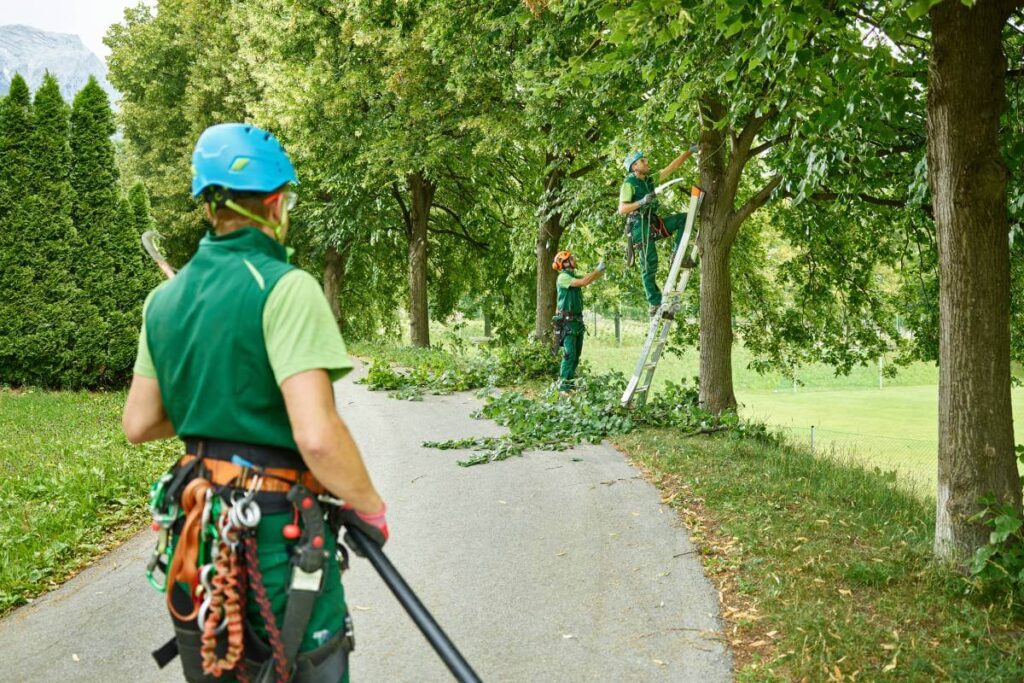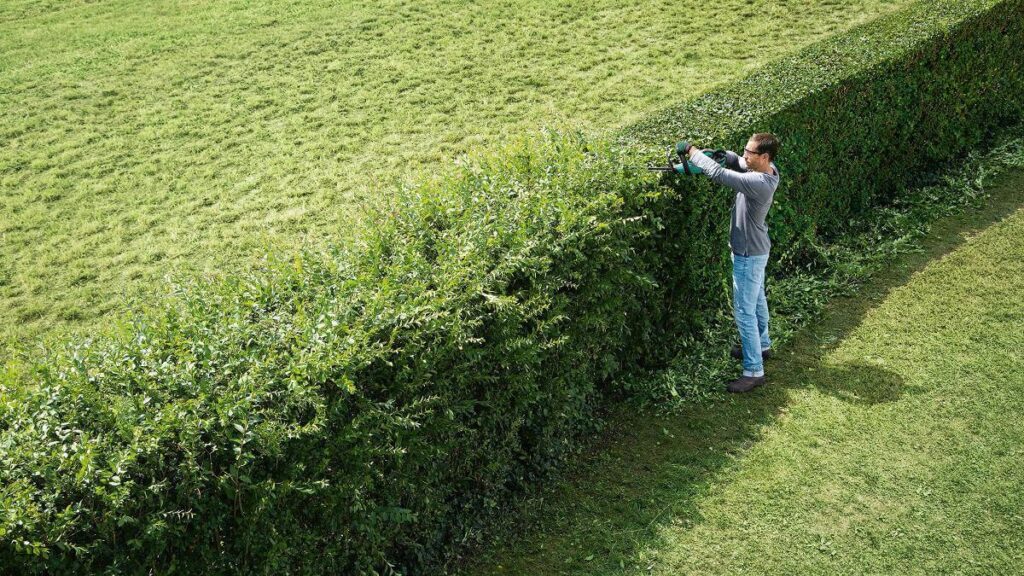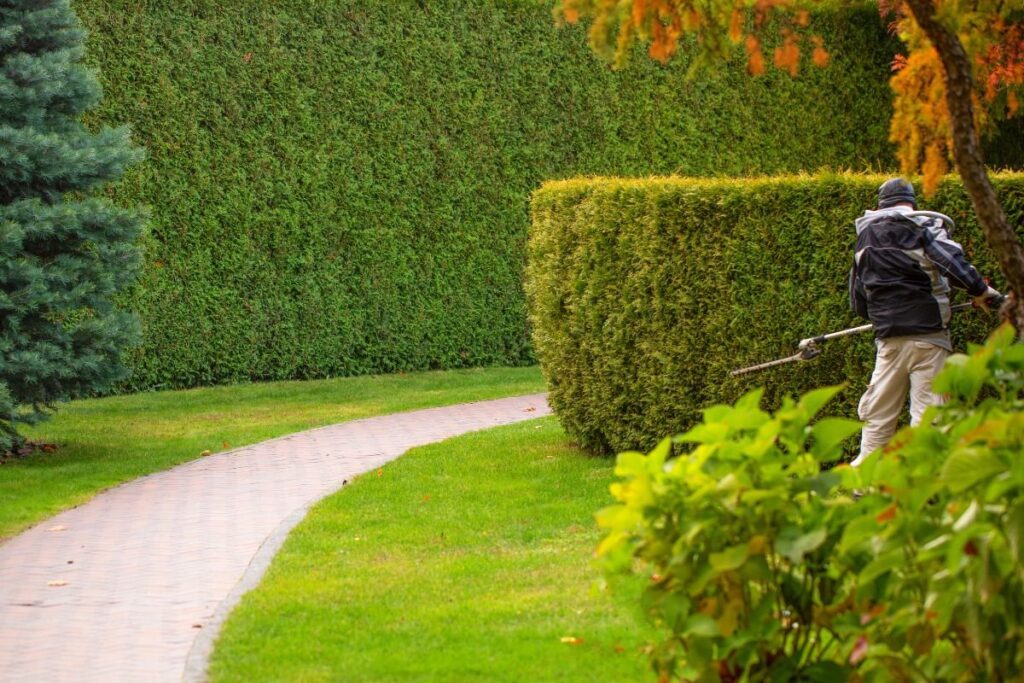Hedges are a staple of any well-manicured garden or landscape, providing not only beauty but also privacy, shade, and structure to outdoor spaces. Regular hedge trimming is essential for ensuring that hedges remain healthy, vibrant, and aesthetically pleasing throughout the year. However, trimming hedges is both an art and a science, requiring the right techniques, tools, and timing to get the best results.
In this comprehensive guide, we’ll explore essential hedge trimming tips that every homeowner should know. By understanding the importance of trimming, the best tools to use, and specific techniques for different types of hedges, you can achieve a polished, professional look while promoting healthy growth.
Understanding the Importance of Hedge Trimming
Regular hedge trimming plays a crucial role in maintaining the health and appearance of your hedges. When done correctly, trimming encourages new growth, removes dead or diseased branches, and helps shape the hedge for better aesthetics. Neglecting to trim hedges can lead to overgrowth, increased risk of disease, and an uneven or untidy appearance.
By engaging in proper hedge trimming practices, you ensure that your plants not only look great but also thrive in the long term. It is important to note that the technique you use will vary based on the type of hedge you have—whether evergreen or deciduous, flowering or non-flowering. For professional guidance on hedge maintenance, you may want to consider specialized Hedge Trimming services, especially if you’re dealing with more complex hedges. Click here for a complete guide to land clearing and tree removal.
Best Times to Trim Hedges
Timing is a crucial factor when it comes to hedge trimming. Different types of hedges require trimming at different times of the year to promote healthy growth and prevent damage.
Evergreen Hedges:
Most evergreen hedges, such as boxwoods, should be trimmed in early spring and again in late summer. Avoid trimming during the fall, as this can stimulate new growth that may not harden before winter, leading to damage from frost.
Deciduous Hedges:
These hedges should be pruned in late winter or early spring before new growth starts. Pruning during this dormant period allows for better shape control and stimulates healthy new growth.
Flowering Hedges:
Flowering hedges such as roses or hydrangeas should be trimmed after their blooming period. Pruning too early could result in cutting off buds, reducing the number of flowers in the next season.
Essential Tools for Hedge Trimming
The right tools are vital to performing effective hedge trimming. Using the wrong equipment can lead to uneven cuts or even damage your plants. Here are the most important tools to have on hand:
Hand Pruners:
Ideal for cutting small branches and twigs. Use hand pruners for precise cuts and to shape the outer edges of the hedge.
Hedge Shears:
These are perfect for trimming larger areas of hedges and making clean, straight cuts. They work best for formal hedges and help create even lines.
Loppers:
For thicker branches that pruners or shears can’t handle, loppers are essential. They provide more leverage and power for cutting dense sections.
Electric or Gas-Powered Hedge Trimmers:
For larger hedges, electric or gas-powered trimmers allow for quicker work. Ensure you choose a model that’s easy to control to avoid damaging your hedge.
Protective Gear:
Always wear gloves, safety glasses, and long sleeves to protect yourself from branches, thorns, or debris while trimming.

Top Hedge Trimming Techniques for Healthy Growth
Knowing how to trim your hedge properly is just as important as having the right tools. Proper technique ensures that your hedge remains healthy and doesn’t suffer from over-trimming, uneven growth, or disease.
Start with Shaping the Hedge:
When trimming, start by outlining the shape you want to achieve. Whether you’re aiming for a formal, straight-edged hedge or a softer, rounded look, it’s important to stick to your plan as you trim.
Bottom-Heavy Shape:
To ensure your hedge receives sufficient sunlight, trim the sides so that the base is slightly wider than the top. This allows sunlight to reach the lower branches, which promotes healthy growth throughout.
Prune in Stages:
Avoid cutting too much at once. Trim small sections at a time, making gradual adjustments to maintain balance and symmetry.
Cut at the Right Angle:
Make your cuts at a 45-degree angle to help water runoff and prevent disease. This angle also encourages healthy regrowth from the branches.
Trim Regularly:
Don’t wait until your hedge becomes overgrown. Regular trimming keeps your hedge in shape and encourages continuous growth. Overgrown hedges are more difficult to manage and may require heavy pruning, which could shock the plant.
Common Mistakes to Avoid During Hedge Trimming
While hedge trimming seems straightforward, many homeowners make mistakes that can harm their plants. Here are common errors to watch out for:
Over-Trimming:
Cutting back too much of the hedge can stress the plant and hinder future growth. Always trim conservatively and avoid cutting more than one-third of the hedge’s growth at a time.
Ignoring the Seasons:
Trimming at the wrong time of year can damage your hedge, especially if done right before winter or during extreme heat. Stick to the recommended pruning times for each type of hedge.
Uneven Trimming:
Inconsistent trimming can result in an uneven or lopsided hedge. Take a step back occasionally to check for uniformity during the trimming process.

Maintaining Your Hedge Between Trimming Sessions
Hedge trimming doesn’t end after a single session. Regular maintenance is key to ensuring that your hedge stays in optimal condition between trims. Here’s how to care for your hedges:
Watering:
During dry periods, ensure your hedge receives adequate water to prevent stress and dehydration.
Mulching:
Add a layer of mulch around the base of your hedge to retain moisture and reduce weed competition.
Fertilizing:
Feed your hedge with a balanced fertilizer in early spring to encourage vigorous growth. Be cautious not to over-fertilize, as this can lead to excessive growth and require more frequent trimming.
Pest and Disease Control:
Regularly inspect your hedge for signs of pests or diseases. Early detection and treatment will prevent further damage.
When to Call a Professional for Hedge Trimming
While regular maintenance can often be handled by homeowners, there are times when professional assistance is necessary. You should consider hiring a professional hedge trimming service if:
Your Hedge is Overgrown:
If your hedge has become unmanageable, a professional will have the tools and expertise to trim it back safely.
You’re Dealing with Complex Shapes:
Formal or intricate hedge shapes require precision and skill. A professional can ensure your hedge is trimmed to perfection.
You Have Tall or Hard-to-Reach Hedges:
Trimming tall hedges can be dangerous without the right equipment. A professional service will handle the job safely and efficiently.
Conclusion: Keep Your Hedges Looking Their Best
Hedge trimming is a crucial part of maintaining a beautiful and healthy garden. By following the right techniques and using the appropriate tools, you can achieve hedges that enhance your outdoor space year-round. Whether you opt to handle trimming yourself or call in the experts, regular care will ensure your hedges remain in optimal condition.
For additional guidance on hedge trimming, check out learn more for expert advice and professional services. Proper hedge care not only keeps your landscape looking neat but also promotes the health and longevity of your plants.
By implementing these tips and maintaining a regular trimming schedule, your hedges will become a beautiful and lasting feature of your property.

